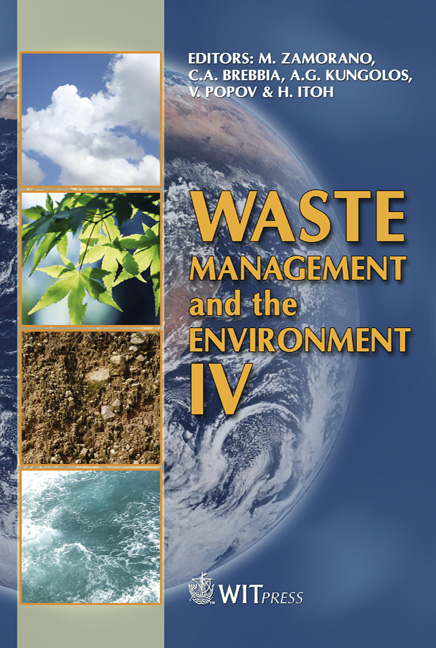Extraction Of Enzymes From Activated Sludge
Price
Free (open access)
Transaction
Volume
109
Pages
9
Page Range
249 - 257
Published
2008
Size
352 kb
Paper DOI
10.2495/WM080271
Copyright
WIT Press
Author(s)
D. Nabarlatz, J. Vondrysova, P. Jenicek, F. Stüber, J. Font, A. Fortuny, A. Fabregat & C. Bengoa
Abstract
About 60–70% of the organic matter contained by domestic wastewater is formed by lipids and proteins. The microorganisms that are able to degrade this organic matter produce hydrolytic enzymes that cannot be produced by standard cultivation techniques. The extraction methods have to include detergents or ionic exchange resins to recover qualitatively and quantitatively the enzyme activity. In the present study protease was extracted by using Triton X100 alone or in combination with a cation exchange resin (CER), under stirring, mechanical or ultrasound disintegration at low temperature. It was observed that the temperature of extraction, the agitation velocity, the concentration of the detergent or the cation exchange resin, and the presence/absence of a buffer conditioned the efficiency of the extraction process and the recovery of the enzyme activity. It was also demonstrated that the preservation of the sample (cooled or frozen), and the time of withdrawal (immediately or after one day aeration) changes the activity of the enzyme recovered. The results showed that the best treatment for the recovery of protease is a combination of 60 g/g VSS of CER, 0.5% Triton and 10 mM Tris buffer pH 8, under stirring at 500 rpm during 1 h at 18ºC. This process allowed to recover 6.48 protease units/g VSS. Keywords: sludge, extraction of enzymes, protease, ultrasound disintegration, mechanical disintegration, stirring, cation exchange resin, Triton X100.
Keywords
sludge, extraction of enzymes, protease, ultrasound disintegration, mechanical disintegration, stirring, cation exchange resin, Triton X100.





